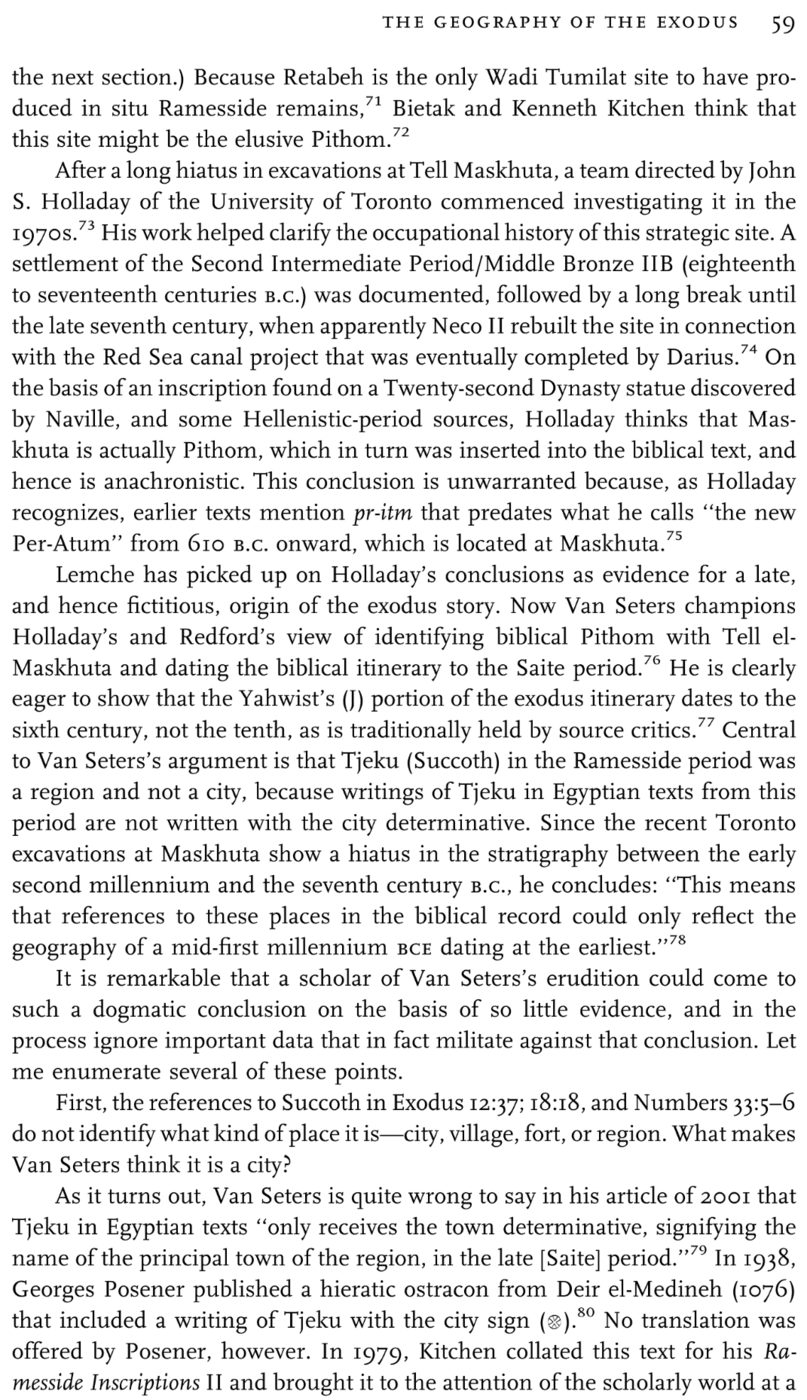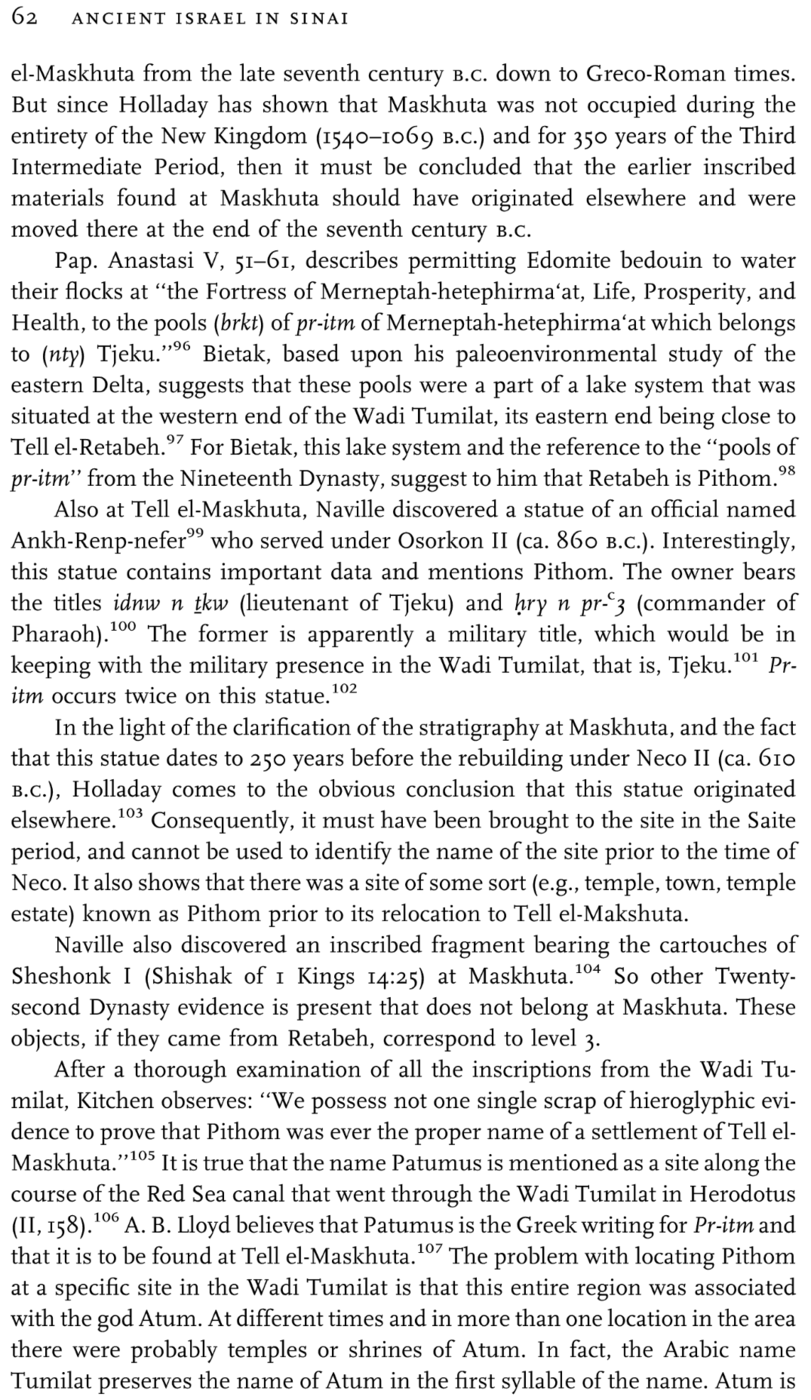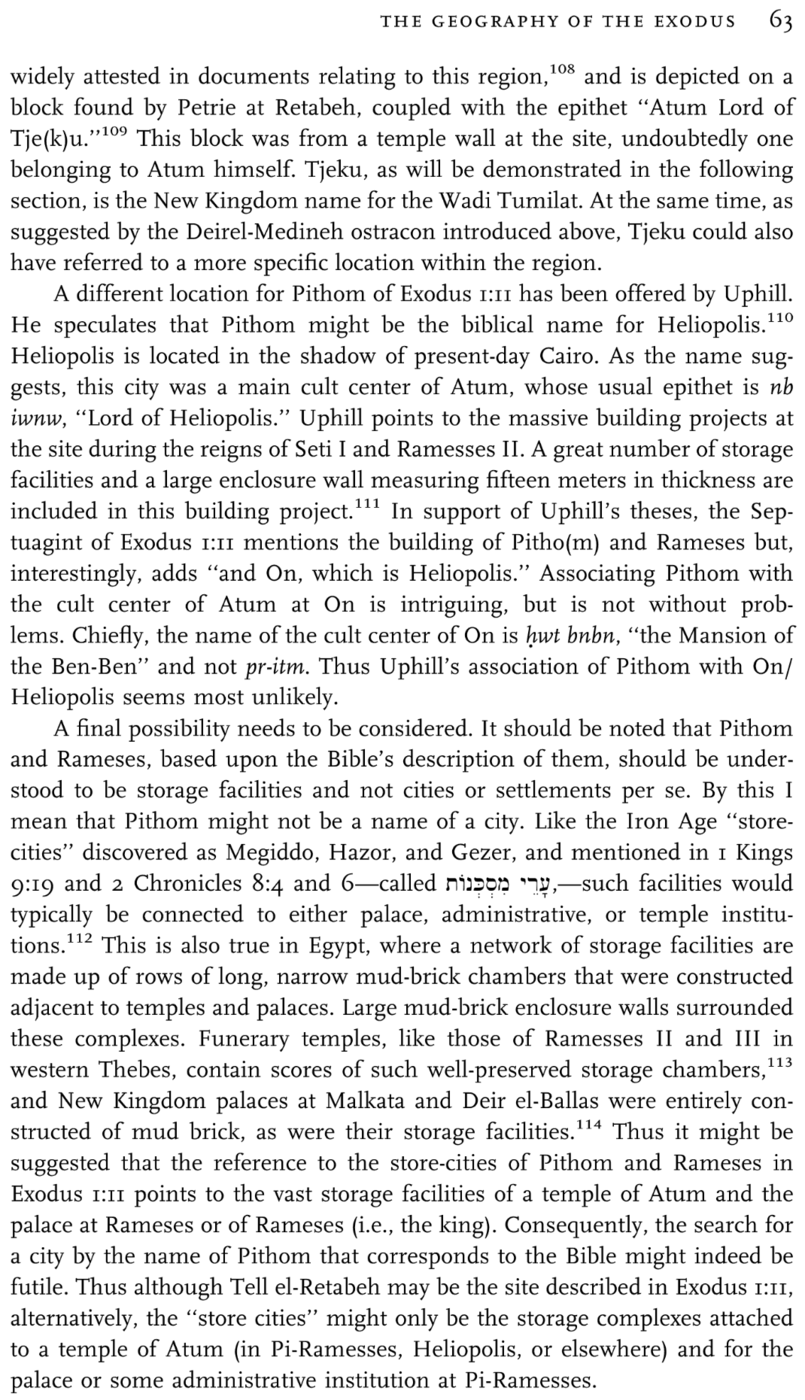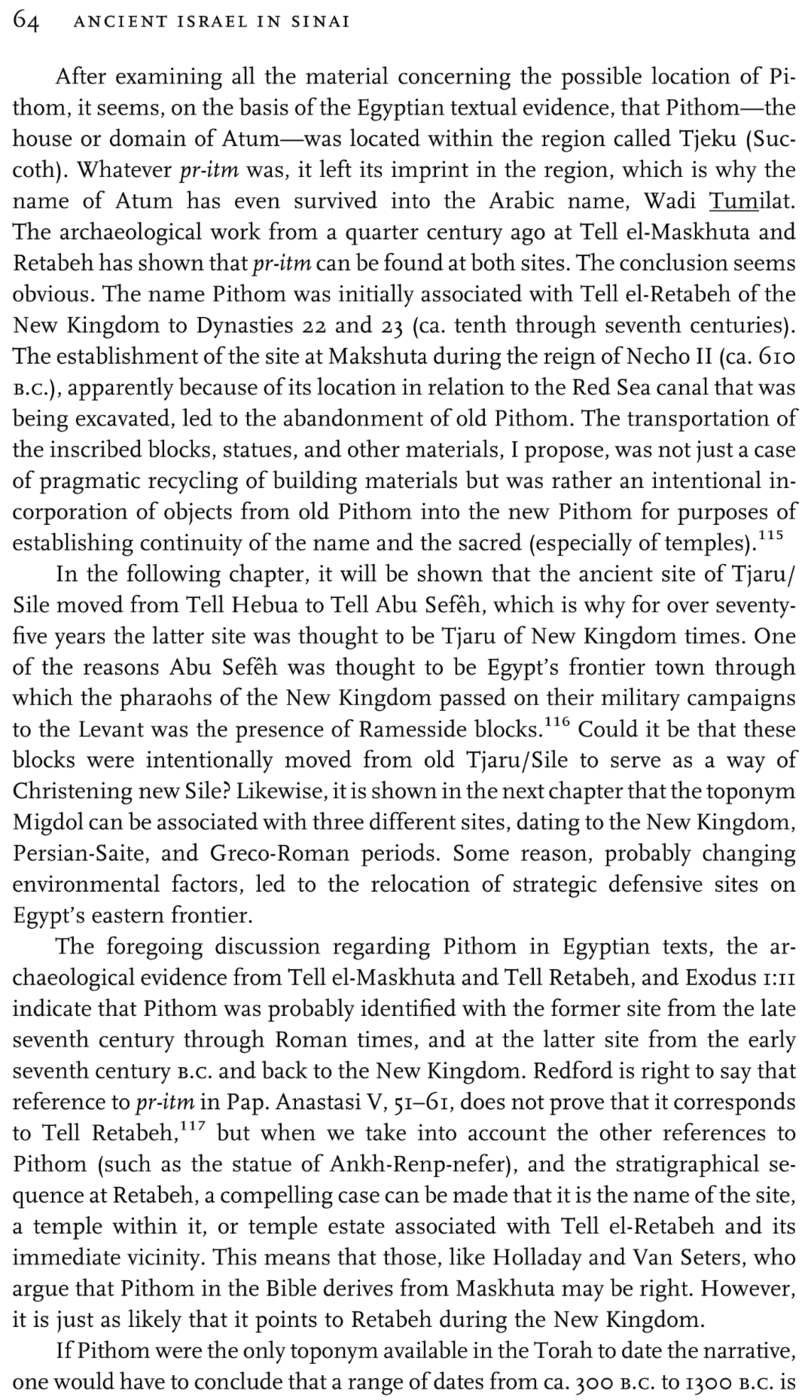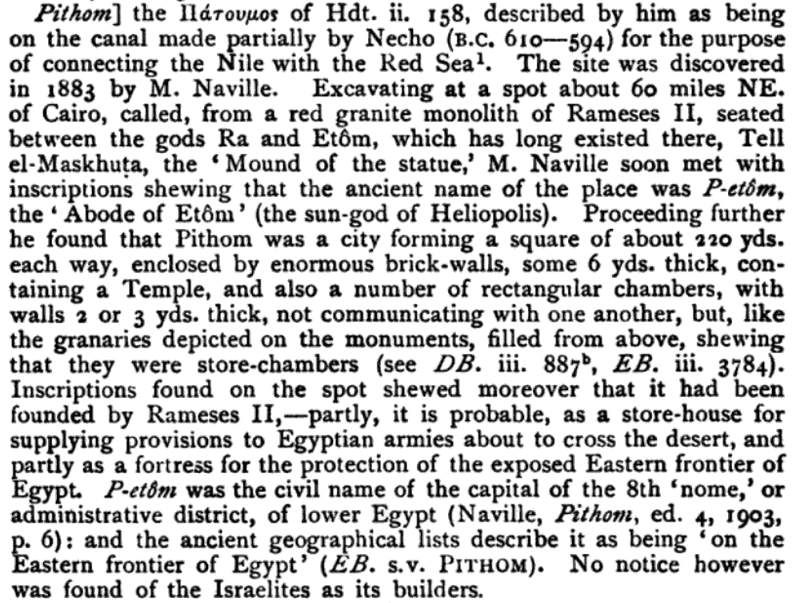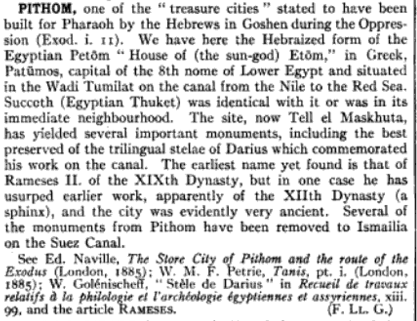|
Other Archaeological Sites / The Neolithic of the Levant (500 Page Book Online) Pithom: Ancient City of Egypt Read The Store-City of Pithom and the Route of the Exodus Page (1883) ... ProofRead and Updated April 12th 2020
Pithom (Hebrew: פיתום) also called Per-Atum or Heroöpolis or Heroonopolis[1] (Greek Ἡρώων πόλις or Ἡρώ) was an ancient city of Egypt. Multiple references in ancient Greek -- Roman [2] and Hebrew Bible sources exist for this city but its exact location remains somewhat uncertain. A number of scholars identified it as the later archaeological site of Tell El Maskhuta [3]. Others identified it as the earlier archeological site of Tell El Retabeh [4]. The 10th century Jewish scholar Saadia Gaon identified the place in his Judeo-Arabic translation of the Pentateuch as [the city of] Faiyum 100 kilometres (62 miles) southwest of Cairo [5] [WikiPedia] ...
Tell El Retabeh and Tell El Maskhuta
8 miles west from Tell El Maskhuta is the site of Tell El Retabeh. This is approximately the midpoint of the Wadi Tumilat. Here was found (1) a group of granite statues representing Ramesses II -- (2) two inscriptions naming Pr-Itm (Temple of Atum) -- (3) storehouses and (4) bricks made without straw. So archeologists (wrongly) concluded that this was the site of Pi-Ramesses. The excavations carried on by Naville for the Egypt Exploration Fund uncovered a city wall, a ruined temple and the remains of a series of brick buildings with very thick walls and consisting of rectangular chambers of various sizes opening only at the top and without any entrances to one another.
Some scholars such as Manfred Bietak and Kenneth Kitchen have argued that Retabeh was the ancient Pithom [9]. This opinion goes back to the 19th century when Alan Gardiner first identified Pithom with the site of Tell El Retaba and this was later accepted by William Albright [10] and Kenneth Kitchen [11]. Yet archeological excavations seem to show that Tell El Retaba had been unoccupied during the period when we find monuments relating to a town called Pithom [12].
More recent analyses have demonstrated that the designation for the temple of Atum -- pr-itm -- can be found in inscriptions at both sites; both at Tell El Retaba and at Tell El Maskhuta. This seems to demonstrate that the name 'Pithom' was used originally for the earlier site -- Tell El Retaba -- before it was abandoned. And when the newer city of Tel El Maskhuta was built the same name was applied to it as well -- as the temple of Atum was moved to El Maskhuta. Thus in effect 'Pithom' was moved to a new location which phenomenon is attested with some other cities as well such as Migdol[14] [See Ancient Israel in Sinai by James Hoffmeier Below] ...
Ancient Israel in Sinai: The Evidence for the Authenticity of the Wilderness Tradition
Page 4 in The Book of Exodus by Roland Edmund Murphy (1960)
Pithom: described by Herodotus (2.158) as being on the canal made partially by Necho (B.C. 610—594) for the purpose
of connecting the Nile with the Red Sea. The site was discovered
in 1883 by Édouard Naville. Excavating at a spot about 60 miles NE
of Cairo called, from a red granite monolith of Rameses II seated
between the gods Ra and Etom, which has long existed there, Tell
el-Maskhuta, the ‘Mound of the statue’, Naville soon met with
inscriptions shewing that the ancient name of the place was P-etom,
the ‘Abode of Etom’ (the sun-god of Heliopolis). Proceeding further
he found that Pithom was a city forming a square of about 220 yards
each way, enclosed by enormous brick-walls some 6 yards thick, containing
a Temple and also a number of rectangular chambers with
walls 2 or 3 yards thick, not communicating with one another but, like
the granaries depicted on the monuments, filled from above, showing
that they were store-chambers. Inscriptions found on the spot showed moreover that it had been
founded by Rameses II — partly it is probable as a store-house for
supplying provisions to Egyptian armies about to cross the desert and
partly as a fortress for the protection of the exposed Eastern frontier of
Egypt. P-etom was the civil name of the capital of the 8th ‘nome’ or
administrative district of lower Egypt (Naville, Pithom, edition 4, 1903,
P 6): and the ancient geographical lists describe it as being ‘on the
Eastern frontier of Egypt’ (EB s.v. Pithom). No notice however
was found of the Israelites as its builders.
The History of the Ancient Near East Electronic Compendium |

